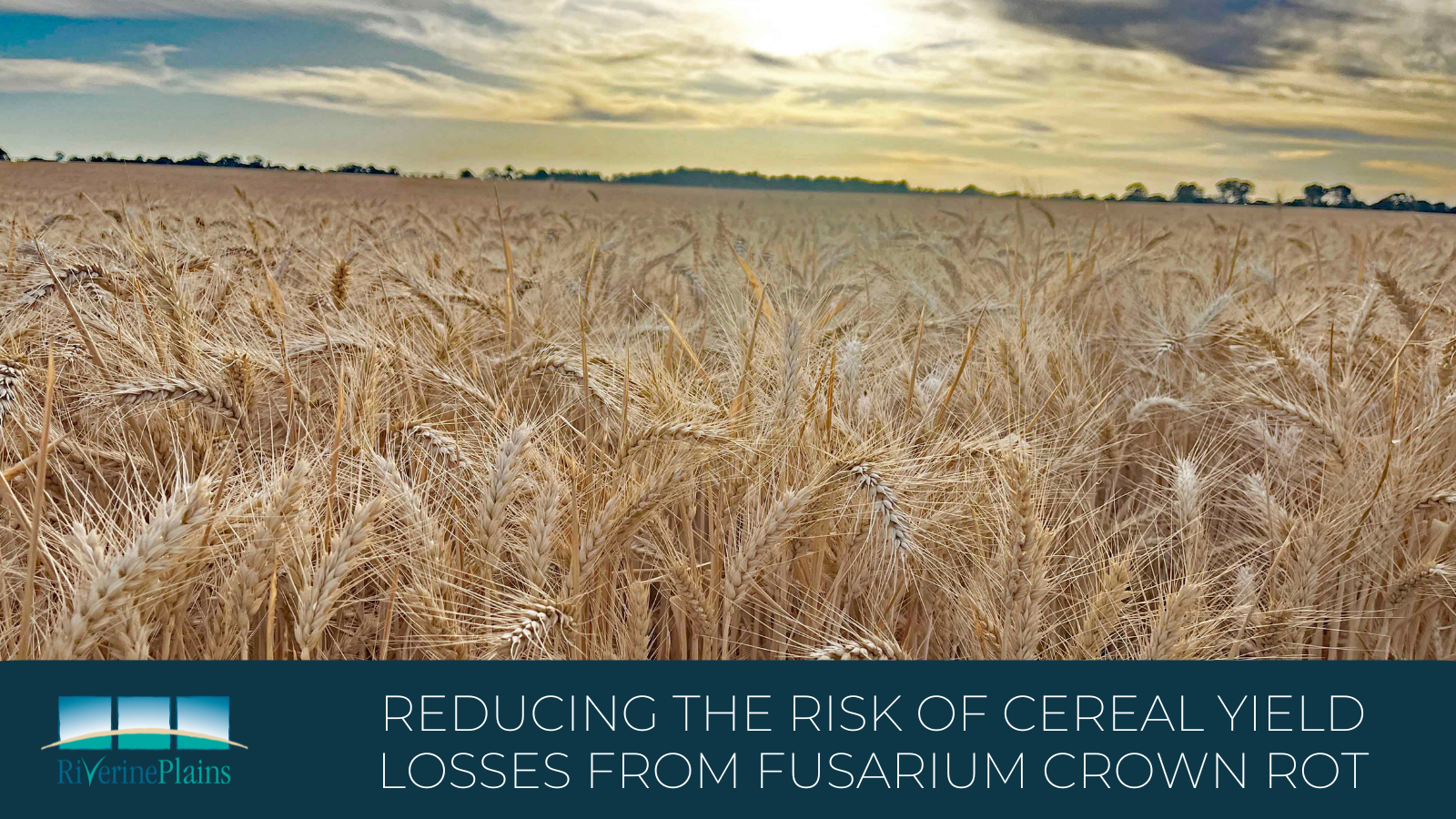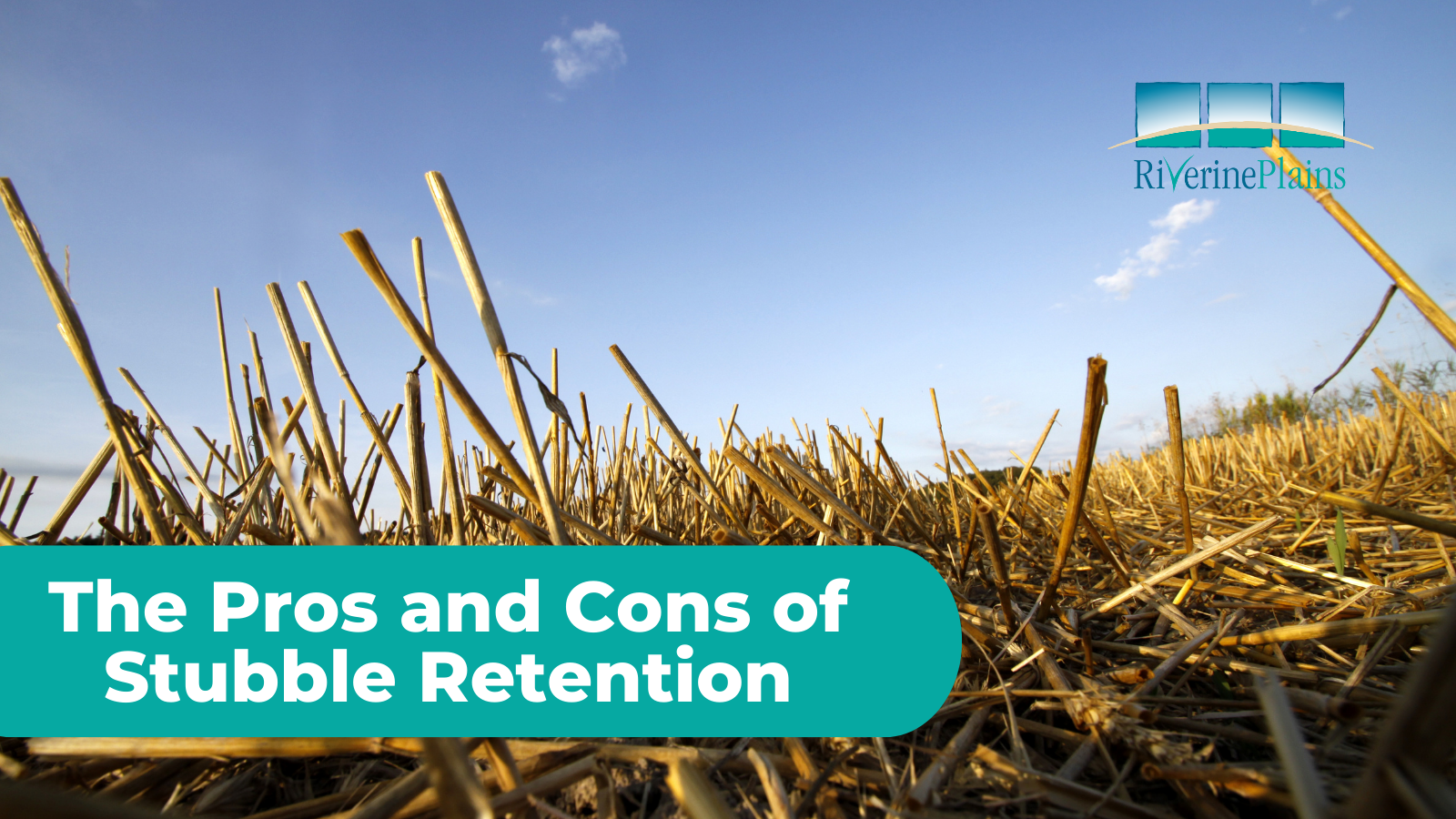Reducing the risk of cereal yield losses from Fusarium crown rot

Key messages:
- Four consecutive good seasons, along with stubble retention and tight cereal rotations have favoured a build-up of Fusarium crown rot in the Riverine Plains region
- High levels of Fusarium crown rot can cause significant yield loss, so assess the risk now by sampling last years’ cereal stubble or by using Predicta®B DNA soil testing
- Integrated management options will reduce the risk of yield loss from Fusarium crown rot and other root diseases
The Riverine Plains region has experienced four good spring seasons in a row. While this has mostly been excellent for crop yields and pasture growth, it has also created a perfect storm for the build-up of Fusarium crown rot, especially in rotations with consecutive cereals and grass weeds such as ryegrass and wild oats.
What’s the risk?
Wheat-on-wheat is the highest risk rotation, with 50 percent of paddocks sampled in the region in 2017 having a medium-to-high risk of yield loss (Milgate and Baxter, 2018). Surveys showed canola-wheat rotations had lower levels of disease, however a number of paddocks in these rotations still fell into the medium-to-high risk range for Fusarium crown rot, with potential yield losses of between 5 and 60 percent. The results show that a single break between cereal crops may not allow enough time to reduce disease inoculum levels.
Symptoms of Fusarium crown rot tend to appear when seasonal rainfall is below average. During a tight spring with heat stress, the Fusarium crown rot fungi restrict the flow of water and nutrients to developing heads, which can result in pinched grain or heads with no grain, with this expression of disease known as whiteheads. This causes yield loss in cereals and can also impact grain quality (i.e. increase screening levels). Durum wheat losses can be over 50 percent and are often greater than losses from Fusarium crown rot in bread wheat or barley.
The Fusarium crown rot fungi are stubble-borne surviving inside cereal stubbles and grass weed residues. Stubble retained systems are common in the Riverine Plains and practices such as spreading, slashing, incorporation and grazing of stubble can spread infected stubble across a paddock.
Managing the risk of yield loss
To manage the risk of yield losses in cereals, firstly identify paddocks at highest risk of Fusarium crown rot. High-risk paddocks include durum, bread wheat or barley crops being sown into a paddock with a history of stubble retention and tight cereal rotations.
To identify the risk, either collect stubble samples over summer or collect soil samples for PREDICTA®B DNA testing. The results from these samples will identify if the paddock has nil, low, medium or high levels of the Fusarium crown rot fungus present.
Note: Riverine Plains can assist by sending stubble samples to the NSW DPI and GRDC Fusarium crown rot survey project and can also help with PREDICTA®B testing (see below). Alternatively, speak to your agronomist.
To reduce the risk of cereal yield losses from Fusarium crown rot, farmers should:
- Use paddock rotations that include at least two consecutive years of non-host crops, such as oilseeds, legumes or fallow. For paddocks with high levels (>50% infection or high risk PreDicta B), sowing a non-host crop for 2-3 years may be warranted.
- Use effective weed management programs to reduce grass weed hosts in-crop and fallow situations. However, remember the larger the grass weed the longer that residue serves as a potential inoculum source.
- Use practices that accelerate stubble decomposition (as the causal pathogen is stubble-borne) to decrease the risk. However, these same stubble management practices can also increase the spread of Fusarium crown rot inoculum across a paddock in the short term.
- Use inter-row sowing if cereals are to be planted into an at-risk paddock to increase the distance between the new and old plants, as most inoculum is in the stem bases of the previous cereal crop.
- Consider sowing a variety earlier within its ideal sowing window. This will bring the grain filling period forward slightly and may reduce water and heat stress, however this needs to be weighed against the risk of frost damage.
- Ensure nutrition is appropriate for the season. Excessive nitrogen will produce bulky crops that hasten moisture stress and make the expression of Fusarium crown rot more severe. Whitehead expression can also be made more severe by zinc deficiency.
- Select a cereal type and variety that has more tolerance to Fusarium crown rot and that is best suited to your region.
- Consider a seed fungicide treatment to suppress Fusarium crown rot. Fungicide seed treatments are not a stand-alone treatment and must be used as a part of an integrated management approach (Millgate and Baxter, 2018, Management of crown rot in southern NSW farming systems ).
New project investigates link between stubble, subsurface acidity and Fusarium crown rot
Riverine Plains is excited to be leading a new GRDC National Grower Network (NGN) project investment which is working with famers and agronomists to investigate the potential correlation between stubble management, subsurface acidity and Fusarium crown rot in our region.
The investment provides resources for paddocks to receive soil pH and Fusarium crown rot inoculum testing, commencing in January 2024. If you would like to participate in the sampling program, please email kate@riverineplains.org.au so that sample collection can be organised and results returned prior to sowing the next cereal crop.
Acknowledgement:
This article was produced as part of the GRDC National Grower Network (NGN) project investment Understanding the link between cereal stubble, subsurface acidity and crown rot.
Resources and further reading:
Management of crown rot in southern NSW farming systems - GRDC


